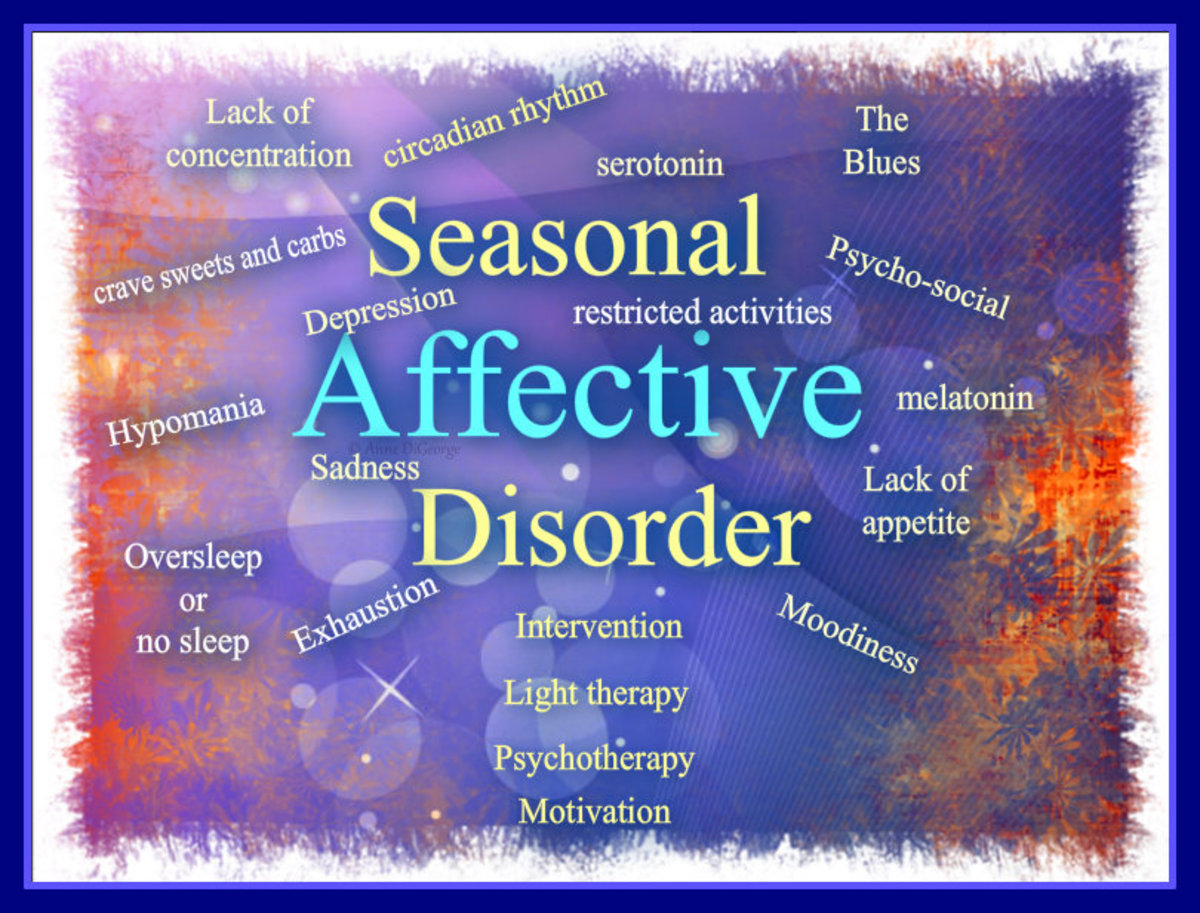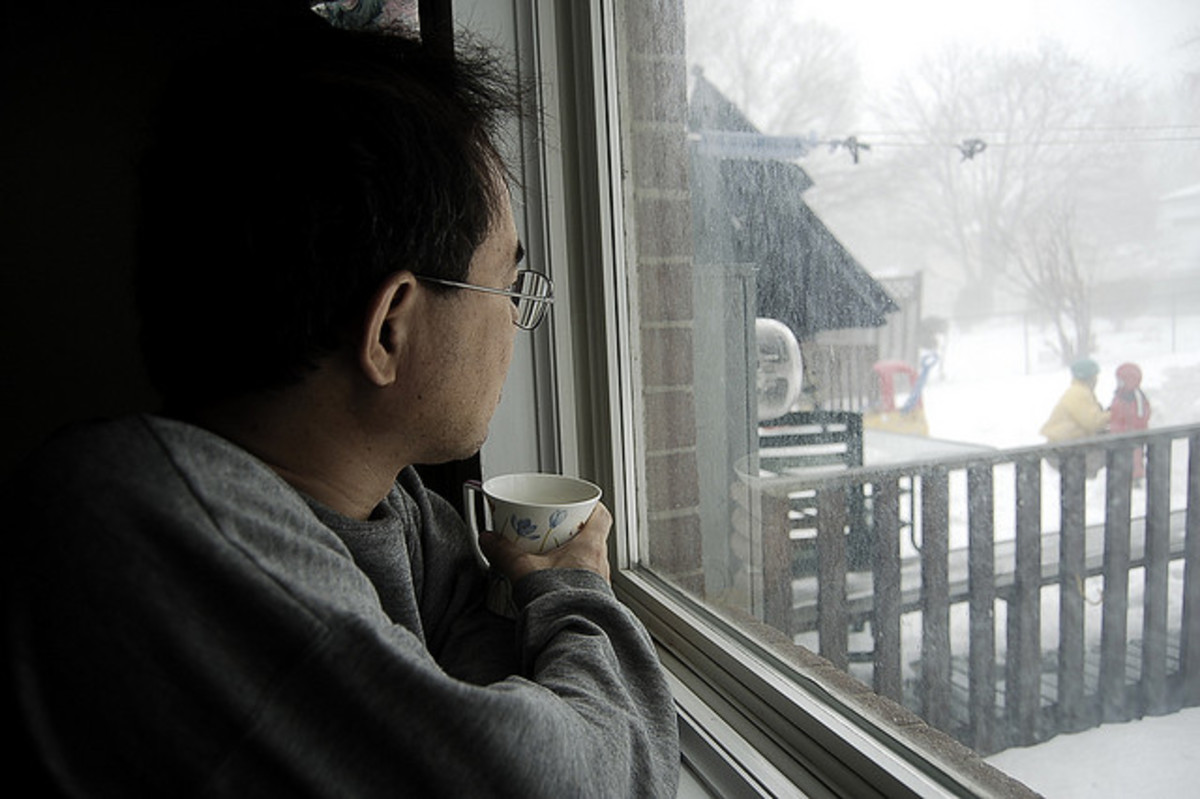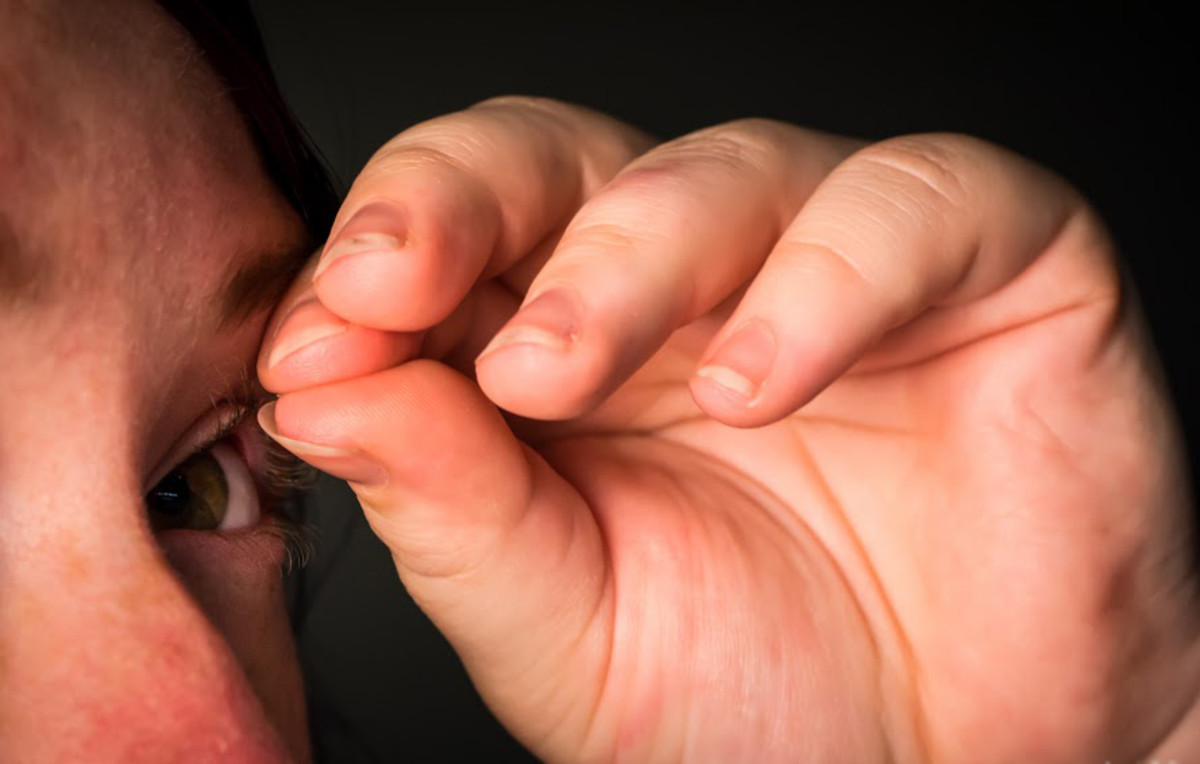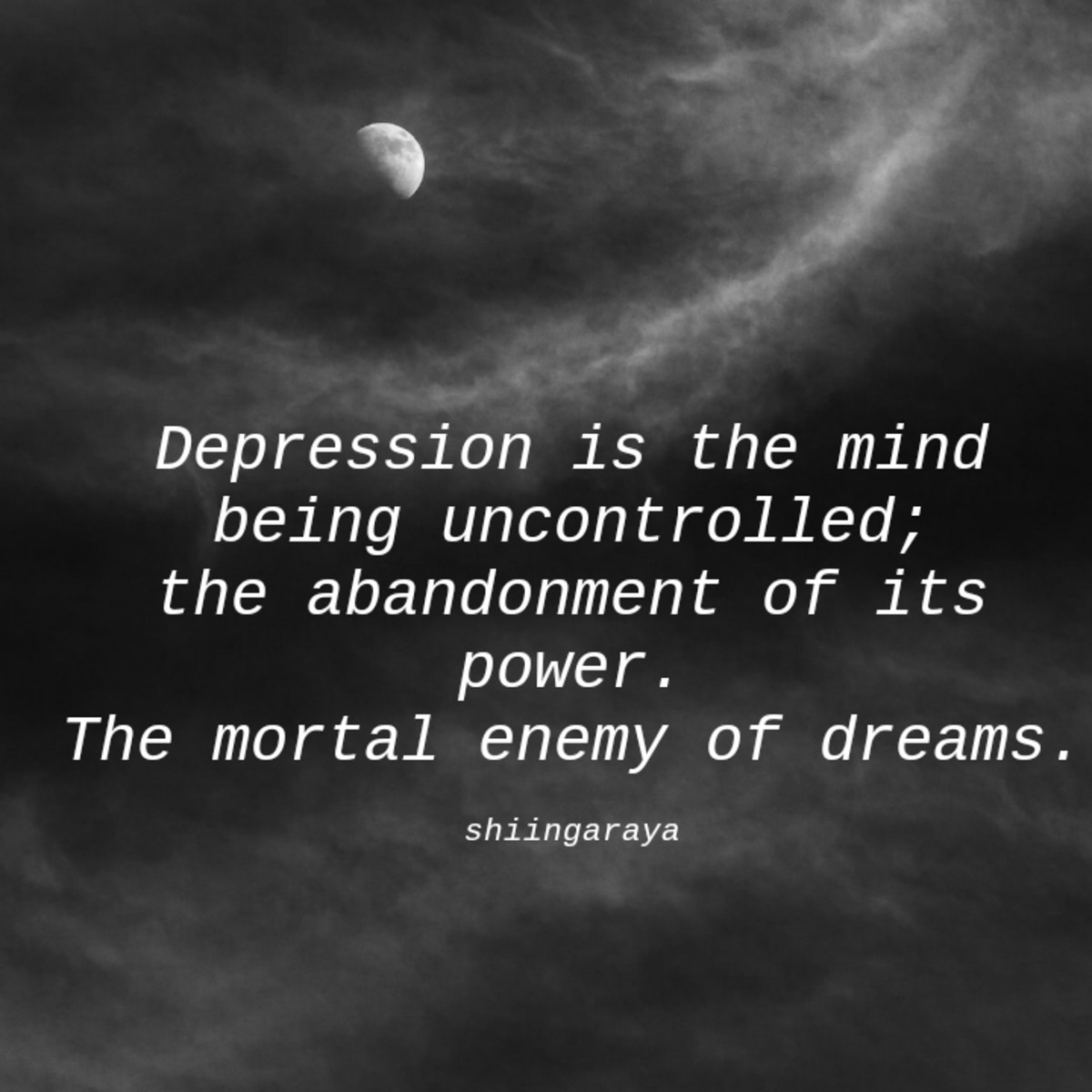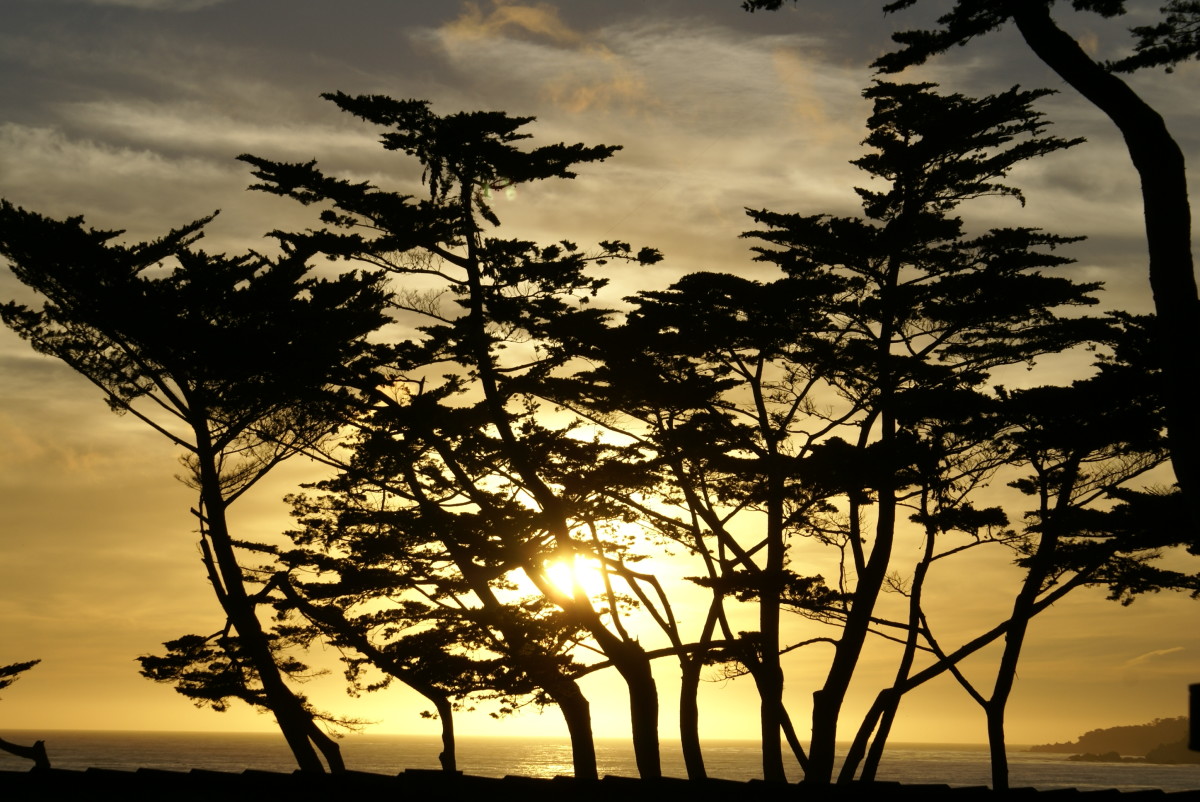- HubPages»
- Health»
- Mental Health»
- Clinical Depression
Full-Spectrum Light Therapy for Seasonal Affective Disorder SAD
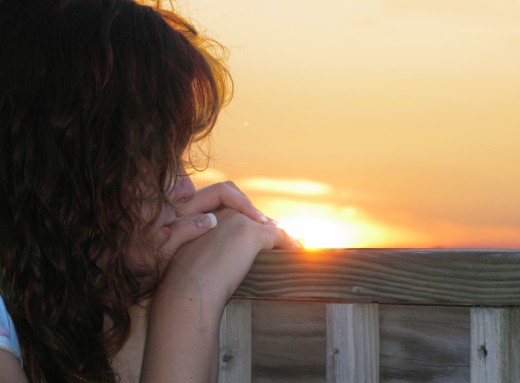
What is SAD?
Seasonal affective disorder, or SAD, is a mood disorder that impacts up to nearly 10% of the U.S. population, depending on the region of the country. It is considered to be a sub-set of Major Depressive Disorder, and is described as depressed mood which occurs specifically during one seasonal time of the year, with the subject having normal mood levels throughout the rest of the year. The typical course of the disorder includes depressive symptoms in the fall and winter months, although some patients report mood changes with spring and summer, which are more likely to involve sleep and appetite disturbance and anxiety. It is important to note that these mood disturbances are extreme, and not just the normal ups and downs that most people experience to some degree throughout the year.
Symptoms of SAD may include not only feelings of depression, but also hyper-somnia, increased appetite and food cravings, irritability, low energy, and difficulty with concentration. Sufferers often isolate themselves, limiting their social interactions, which further feeds into feelings of depression.
What Causes SAD?
It is thought that the cause is related to decreased light exposure, so those suffering from fall and winter SAD often reside in the northern regions, where daylight is significantly diminished during the fall and winter seasons. The fact that SAD is prevalent in Arctic regions, such as the northern areas of the Nordic countries, supports this theory. In addition, it has been determined that light therapy, or treatment with a full-spectrum light source, can be extremely helpful in combating the symptoms. SAD may also be related to varying levels of the brain chemical serotonin and/or the hormone melatonin, both of which are partially affected by light.
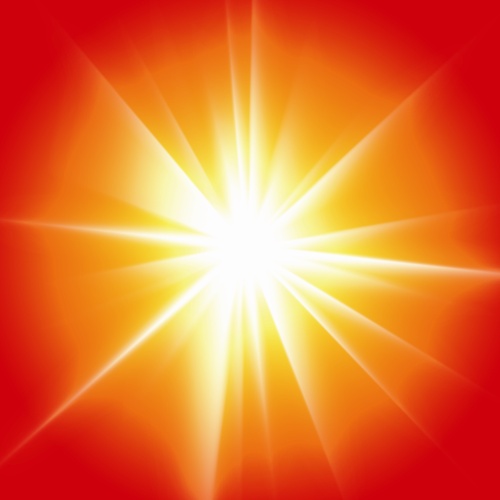
Interesting Idea - The SAD Café
What is Light Therapy for SAD?
When considering light therapy to combat symptoms of Seasonal Affective Disorder, it is important to do so under the guidance of a physician. It is also wise to remember that these "light boxes" are thus far not regulated, so following a doctor's advice as to which brand to purchase is even more important.
A regular incandescent light is not effective in the treatment of SAD. It must be a specialized full-spectrum light, which will emit far more lumens (about 20 times more) that a regular light source. A full-spectrum light with a capacity of 10,000 lux is generally recommended for SAD light therapy, usually with the patient sitting within 18-24 inches of the light source, but not looking directly at it, for 30 to 60 minutes per day. A physician will set the exact distance from the light source and time of exposure for a given patient to start with, which will be adjusted as needed, depending on the degree to which the patient's symptoms are relieved. For those who also suffer from bipolar disorder, it is especially important not to over-expose to the full-spectrum light, as some studies have shown a tendency for over-exposure to increase the likelihood of a hypo-manic episode.
When Is Light Therapy Best Used?
The light therapy has been most often prescribed for early morning use, preferably before sun rise, but it can also be effective for evening use, at about the time the sun is setting. The idea is to "lengthen" the day for the patient, providing a substitute for daylight for an extra half hour to an hour per day. It is generally recommended that the patient use the light every day, without exception if at all possible, and at the same time of the day each time. Most of the light box products recommend that the light itself be no more than 18-24 inches from the eyes of the patient, in order to obtain maximum lux to the eye, and therefore to the brain. It is thought that positioning the light slightly above your line of vision is the best angle. Many patients sit at a desk or table and read, work on the computer, knit or talk on the phone during their light therapy session.
Additional Treatments for SAD
It may be most effective to begin the light therapy before the symptoms of SAD are established, and the brain has already begun to adjust to the change of season. For those suffering from fall and winter SAD, mid-September to mid-October is the usual recommended time period to begin daily light therapy. Most patients continue through March and sometimes well into April before putting their light away for the spring and summer season.
Some insurance plans are now covering light boxes with a physician's prescription, so you should check into that possibility, as the quality of light needed for effectiveness can run from about $200 to $400.
Additional treatment for SAD include use of anti-depressants, psycho-therapy, cognitive-behavioral techniques and melatonin therapy. It is also helpful to people with SAD to spend as much time outside during the fall and winter months as possible, as this allows more natural daylight to reach the brain. If you think you have the signs of Seasonal Affective Disorder, you should see your general practitioner and perhaps get a referral to a mental health professional who has experience with SAD.
More Tips for Dealing with SAD
What is Your Experience with SAD?
Do You Suffer From SAD?
Helpful Resources
5 Ways to Optimize Light Therapy Effectiveness
A Review:
1) Positioning of the light - The position of the light, relative to the eyes, is very important. Most specialists say that it should be 18 to 24 inches from the eyes, but no more. At or slightly above the level of the eyes is best, and angled slightly also appears to work better. It should be positioned at about 10 o'clock or 2 o'clock with the eyes at the 12 o'clock position. (Full-spectrum light therapy is safe for most people's eyes, but it is recommended to check with your eye doctor if you have diabetes or any eye condition.)
2) Time of day and usage time - It is thought that early morning, or as soon after rising as possible, is the best time to use the full-spectrum light. Usually, a mental health professional will guide the patient to start at 20 minutes. If the light is less than the optimum strength (10,000 lux) or is positioned further away from the eyes than recommended, more exposure time may be needed. If little or no results are noted, increasing to 30 minutes is often the next step. Some people may require up to an hour, but times of light exposure should be monitored by a physician, since it can have harmful effects for some people.
Get Plenty of Sun Exposure
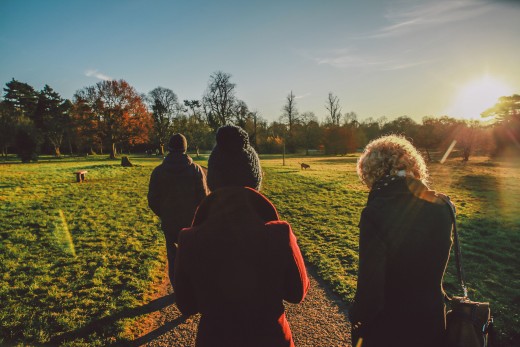
A Few Warnings to Keep In Mind
There are also a few warnings that should be stressed. First, some individuals have adverse effects from light therapy. As mentioned above, those with bipolar disorder have a slight risk of experiencing hypo-manic episodes after full-spectrum light exposure, particularly if it is over-used. Certain medications also combine badly with light therapy, such as those that are photosensitive. These include antibiotics, so it is vital to check with a physician when any new medication is started while light therapy is in use. In addition, any full spectrum light used for SAD should be filtering out at least 90% of ultraviolet rays, which can be harmful to the body.
3) Consistency seems to matter - According to studies, full-spectrum light therapy is much less effective if used 3 to 4 times a week rather than daily. It is important that the usage be consistent, seven days a week, for optimal benefit. It appears that the effect is cumulative rather than incremental, so using the light every once in a while will have little, if any, lasting effect on mood.
4) Combine light therapy with other modalities - Studies show that those who participate in weekly talk therapy in addition to their light therapy do better than those who do not. In addition, other mood enhancing practices, such as meditation, strenuous exercise and yoga, are recommended to boost the effect of the light therapy on overall mood levels.
5) Maximize "natural" light exposure - While using the full-spectrum light, it is also helpful to get as much natural light exposure as possible outside. Sit for 10 minutes on a sunny deck or patio, take a walk on a sunny day, park far from destinations and walk, face turned toward the sun if possible, participate in outdoor sports or yard work. It will help boost vitamin D production as well, which is another mood benefit.
Keeping these five tips in mind, SAD sufferers will get the most out of their full-spectrum light therapy.
Sources:
Mayo Clinic
MaryAnn Wei, MD
Carol E Watkins, MD
Wikipedia
Amjo Corp.
© 2011 Katharine L Sparrow


